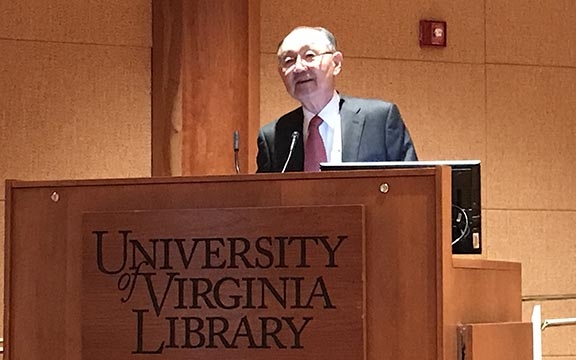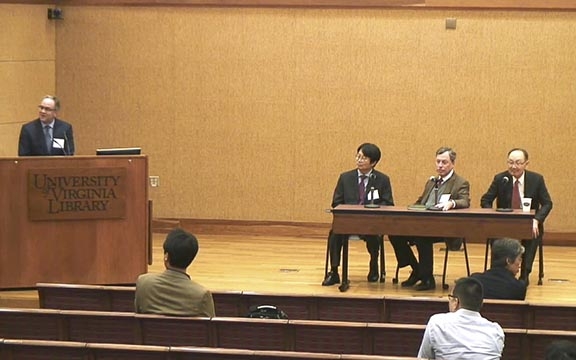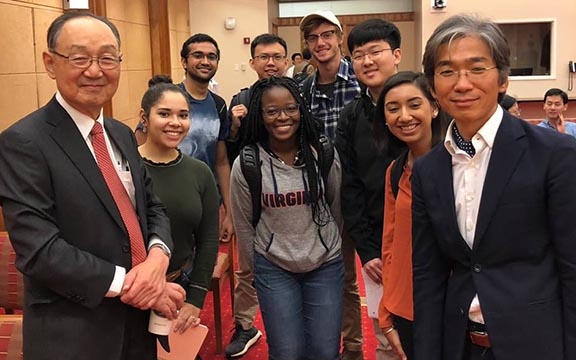The Candlelight Revolution and the Prospects for Peace on the Korean Peninsula
U.S. President Donald Trump met with North Korean Supreme Leader Kim Jong-un on June 12, 2018, in Singapore. It was the first summit meeting between the leaders of the United States of America (USA) and the Democratic People's Republic of Korea (DPRK). They signed a joint statement, agreeing on several issues including security guarantees for North Korea, new peaceful relations, and reaffirmation of the denuclearization of the Korean Peninsula. It was a remarkable turn of events over a short period of time. For comparison, in 2017, Pyongyang conducted ICBM tests and an alleged “hydrogen bomb” test, declared the completion of a strategic nuclear force, and even threatened to annihilate the United States.
Why the sudden change? Three leading experts on Korea -- Professor Paik, Nak-chung from Korea, Professor Philip Zelikow from University of Virginia, and Professor Jae-Jung Suh from Japan -- delivered presentations to shed lights on the question at the inaugural UVA Symposium on Korea, held in the Harrison Auditorium on September 28th, 2018. The conference was well attended by students, faculty members, and the general public who showed a great deal of enthusiasm.
Professor Paik explained in his keynote speech that the ‘candlelight revolution’, which began with massive nationwide demonstrations of 2016-17, eventually brought down the Park Geun Hye government, and ushered in the new presidency of MOON Jae In. Calling itself the candlelight government, Moon’s administration is the chief driving force in the whole process of the great changes occurring in the Korean peninsula. Professor Paik further argued that, after the Panmunjom Declaration by South Korean President Moon Jae-in and Kim Jong Un in April 2018, the June 12 US-North Korea summit in Singapore, and the September Pyongyang Declaration at the third and latest summit meeting between the two Korean leaders, the movement for peace in the Korean peninsula has acquired an irreversible momentum. Prof. Zelikow offered an American perspective on how diplomacy with North Korea can work. He observed that a one-track devotion to ending the nuclear program will force all other important issues to queue up behind it. In contrast, he argued, a multi-track process would actually do more to ease progress on denuclearization, as well as multiple other fronts. Prof. Suh stated that the possibility of peace was created by the North’s new leadership that initiated the transition from the military-first politics to the economy-first strategy, symbolized by LEDs lighting skyscrapers in Pyongyang. The possibility was turned into a virtuous cycle of diplomacy and peace after the candlelight demonstrations in the South helped install the Moon Jae In administration that prioritized peace over confrontation. He argued that the United States has a historic choice to make between continuing the past of confrontation and nuclear weapons and opening the future of peace and denuclearization.
In the subsequent panel discussion session, chaired by Prof. Youngju Ryu from University of Michigan, the three speakers agreed that politicians and policy makers should rise above politics and come up with a coherent strategy for peace and denuclearization in Korea. And it takes a well-informed, activated citizenry to force the leaders to seize this opportunity to bring everlasting peace to the Korean peninsula.
This symposium was generously sponsored by the East Asia Center, the Pavilion Seminars Program, the Department of Politics, the Department of Physics, and the UVA Korea Society.
Prof. Paik's article on the subject, published in The Asia-Pacific Journal, can be found here.
Photos

Professor Paik, Nak-chung delivering his keynote speech, ‘Candlelight Revolution, South Korean Democracy, and Changes in the Peninsula.’

Professor John Owen of Department of Politics, who was a co-organizer of the symposium, introducing Professor Youngju Ryu from University of Michigan who chaired the panel discussion session. Sitting are three panelists, Jae-Jung Suh, Philip Zelikow, and Paik, Nak-chung (from left).

Professor Paik, Nak-chung, and Professor Seung-Hun Lee of Department of Physics, who was a co-organizer of the symposium with students of his Pavilion Seminar class, Science & Politics.